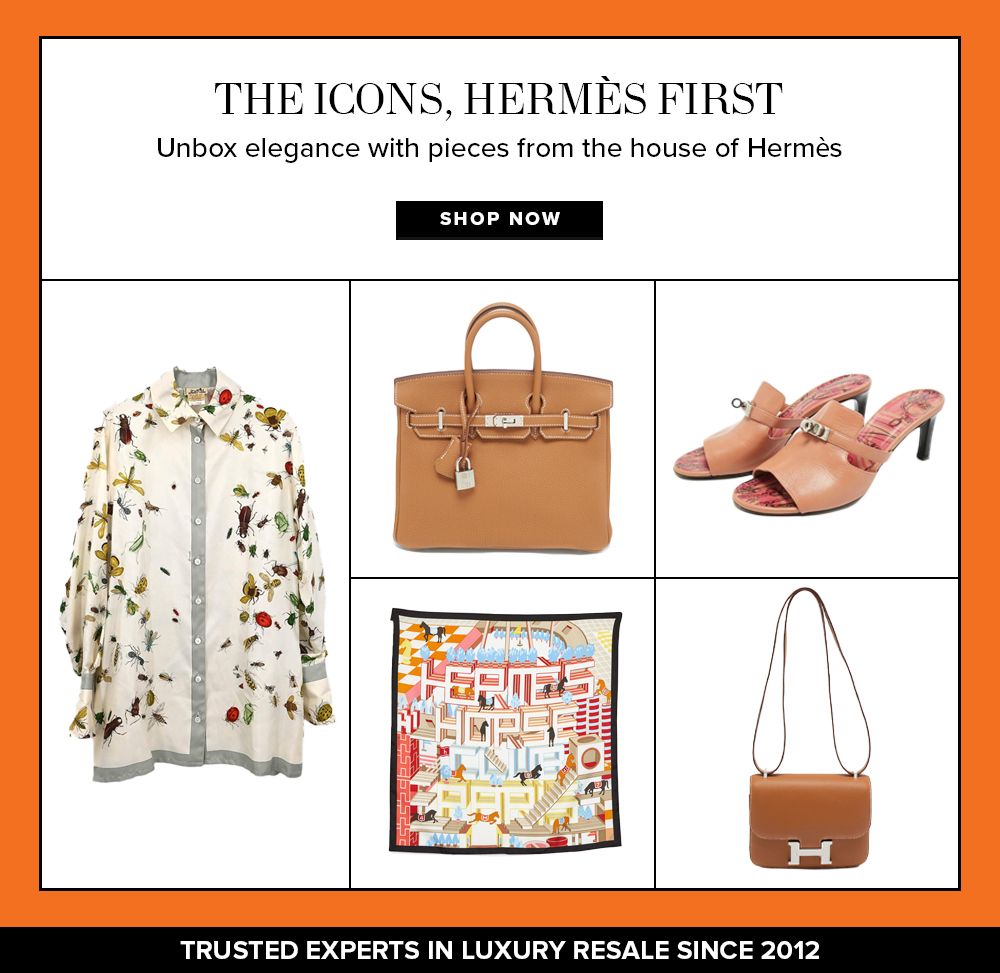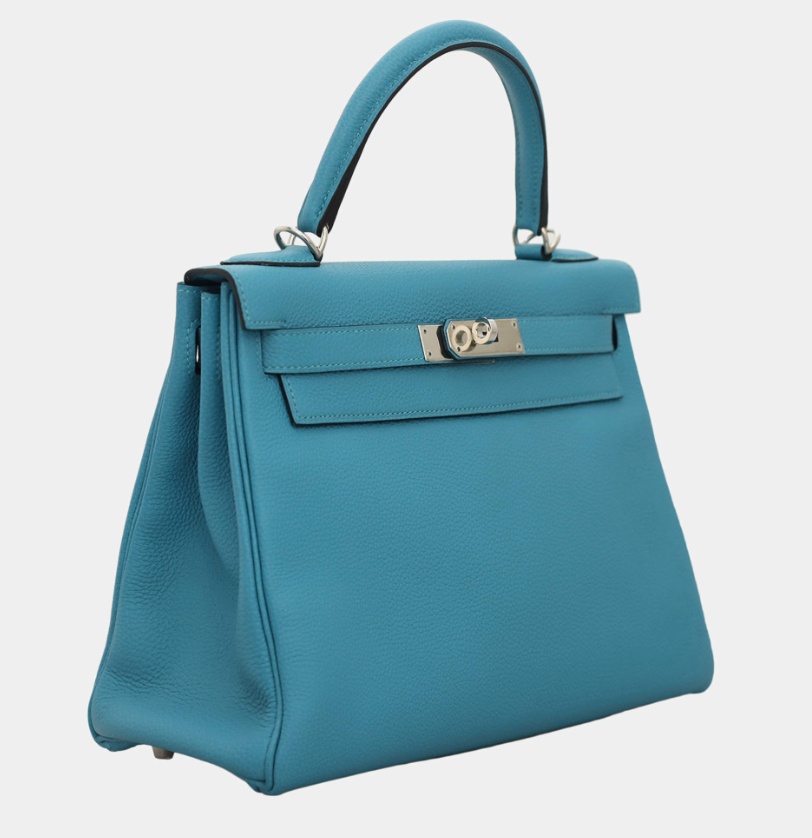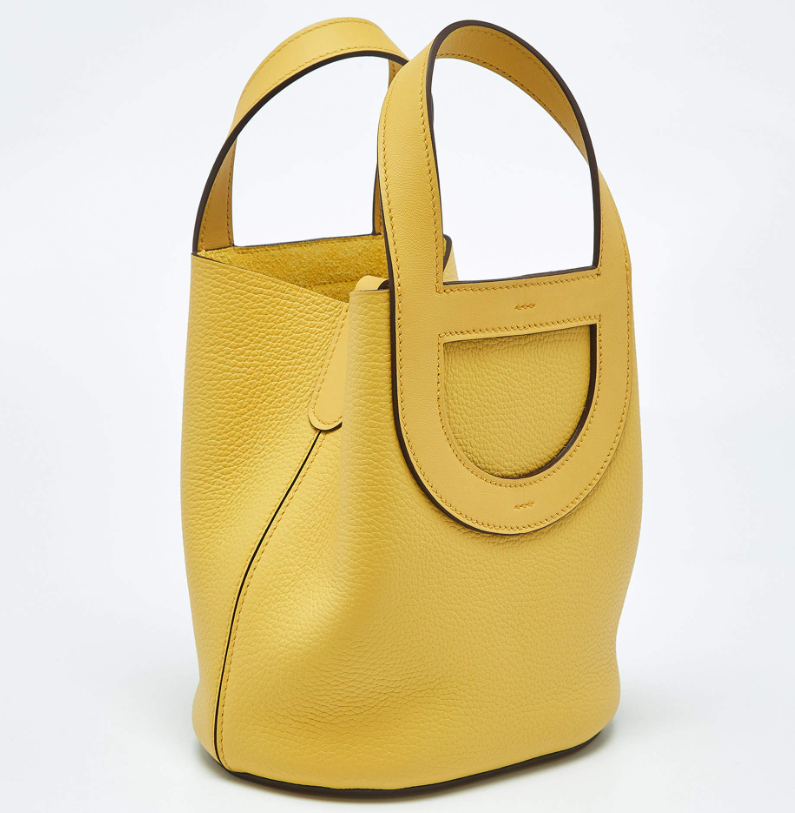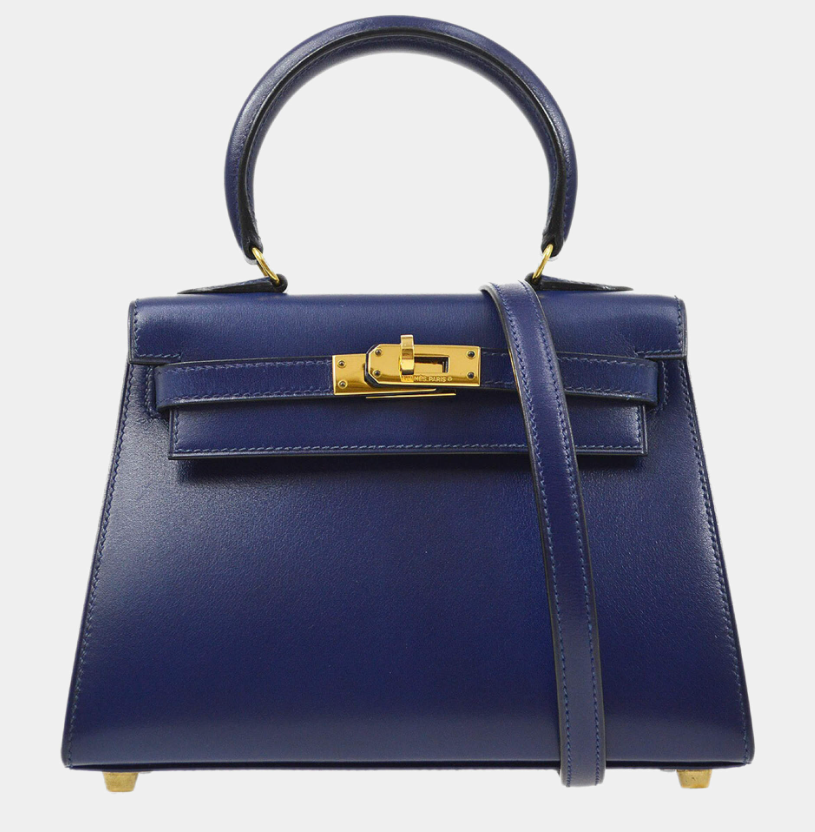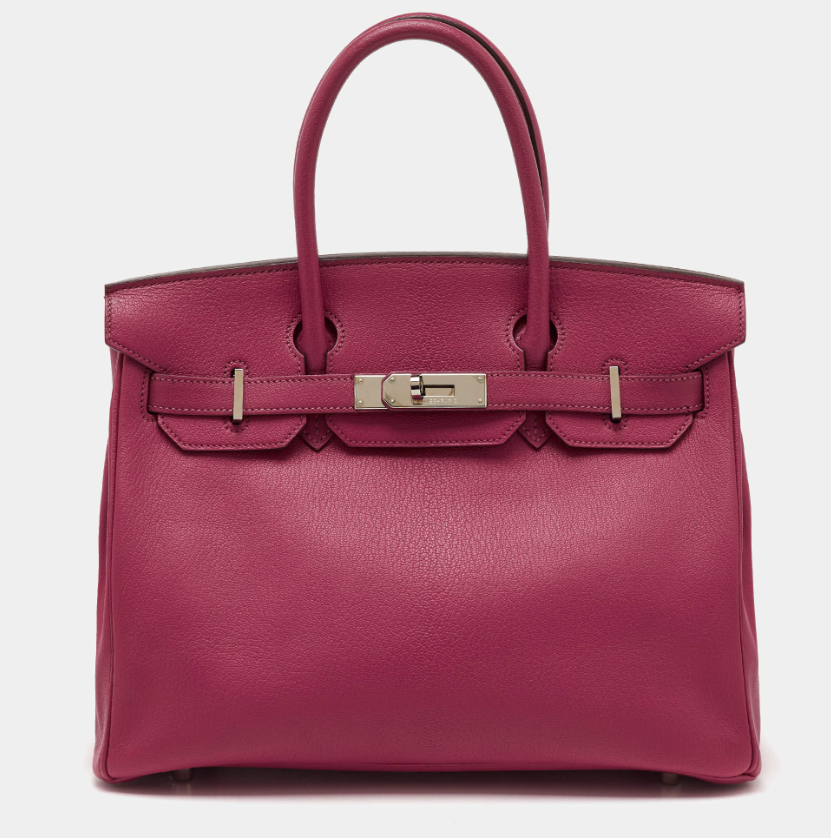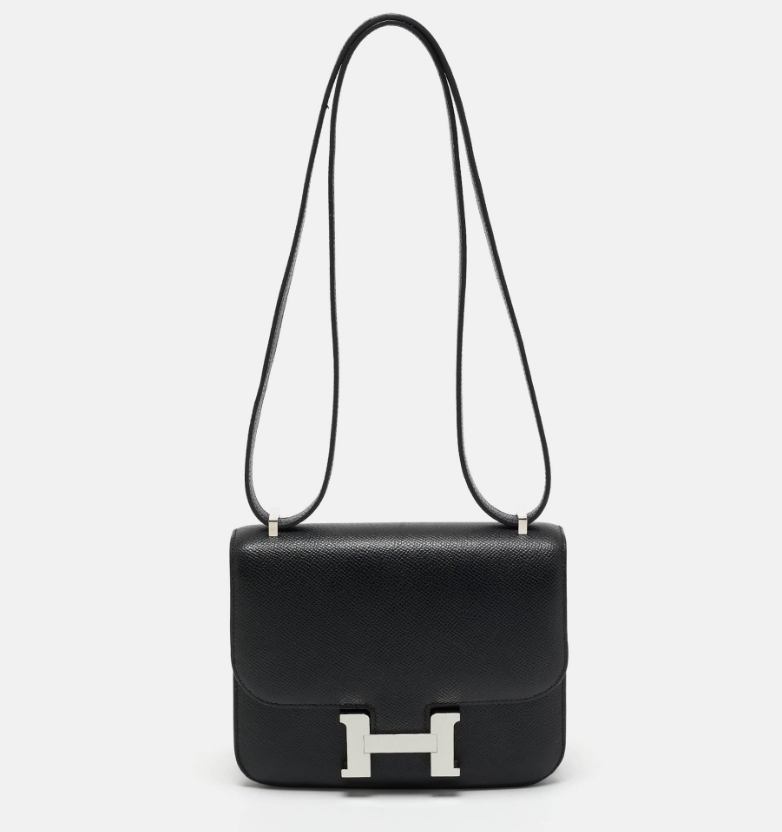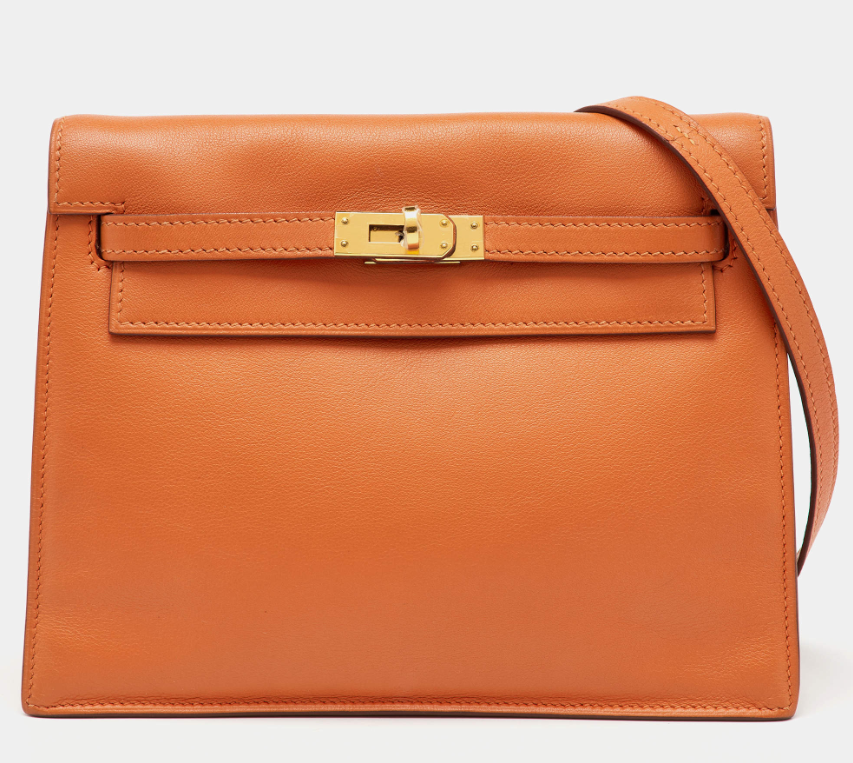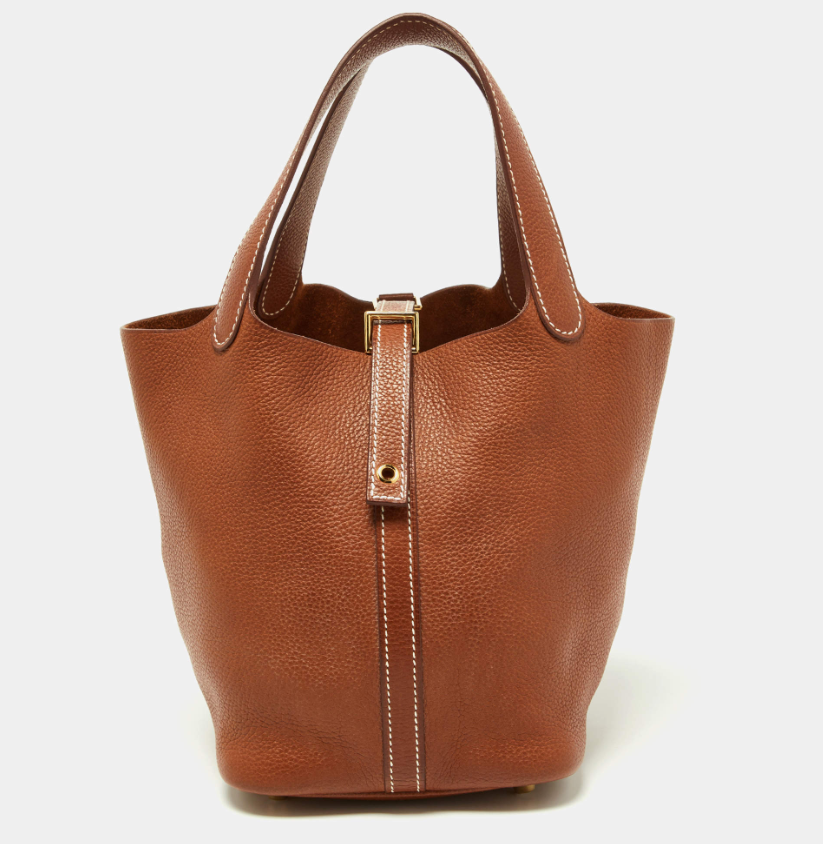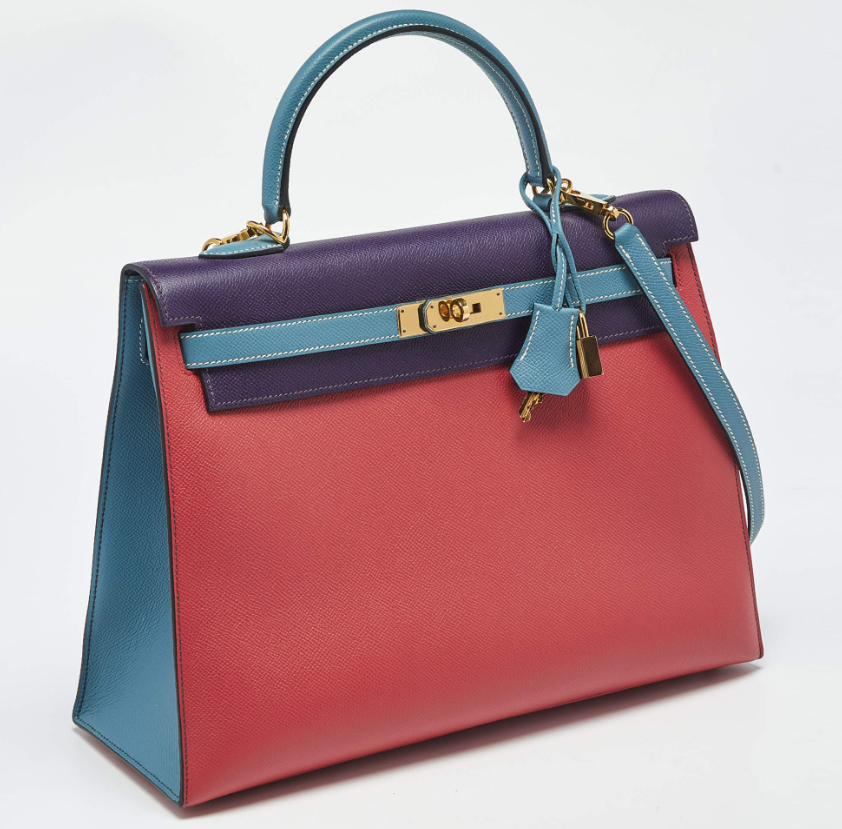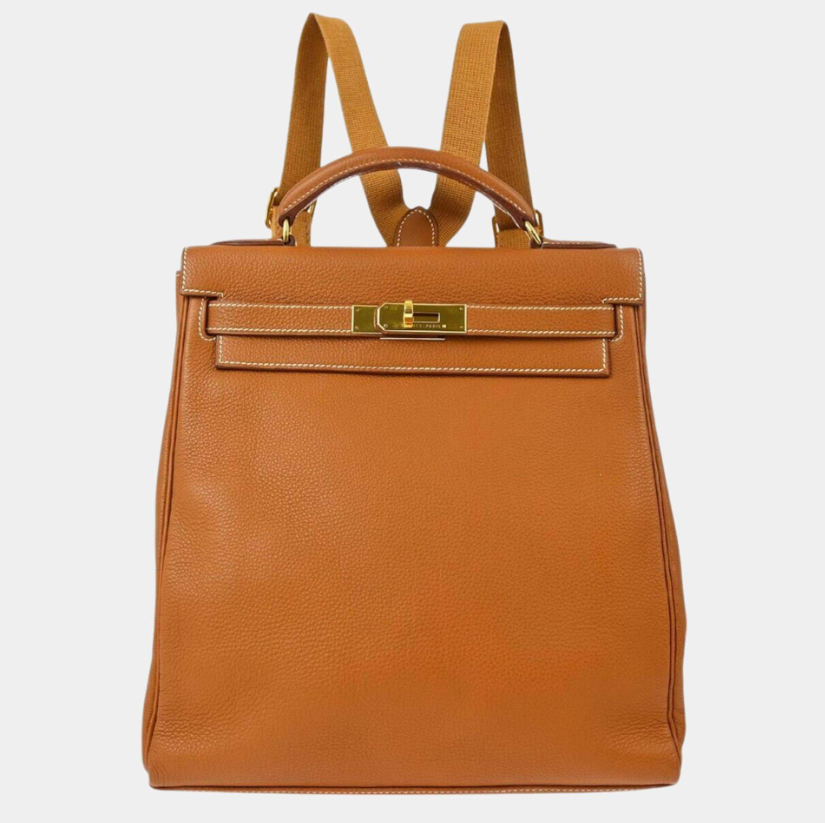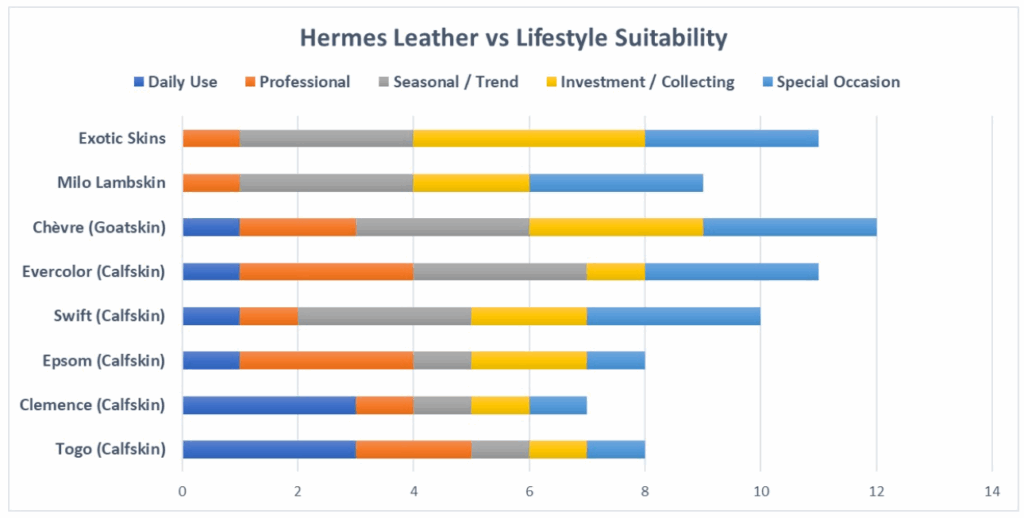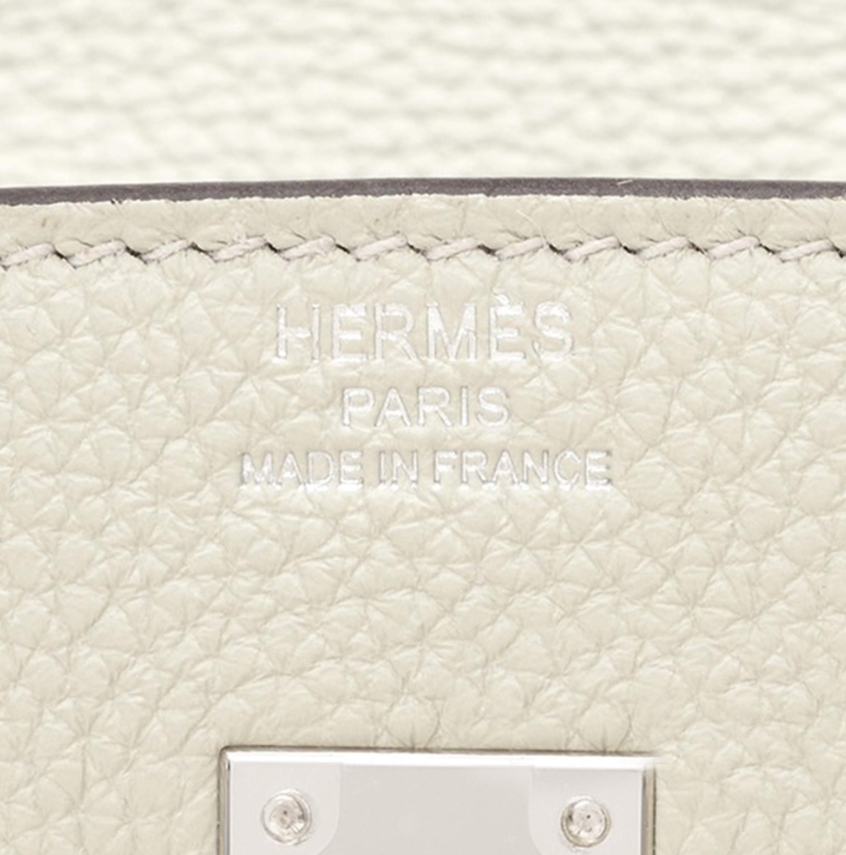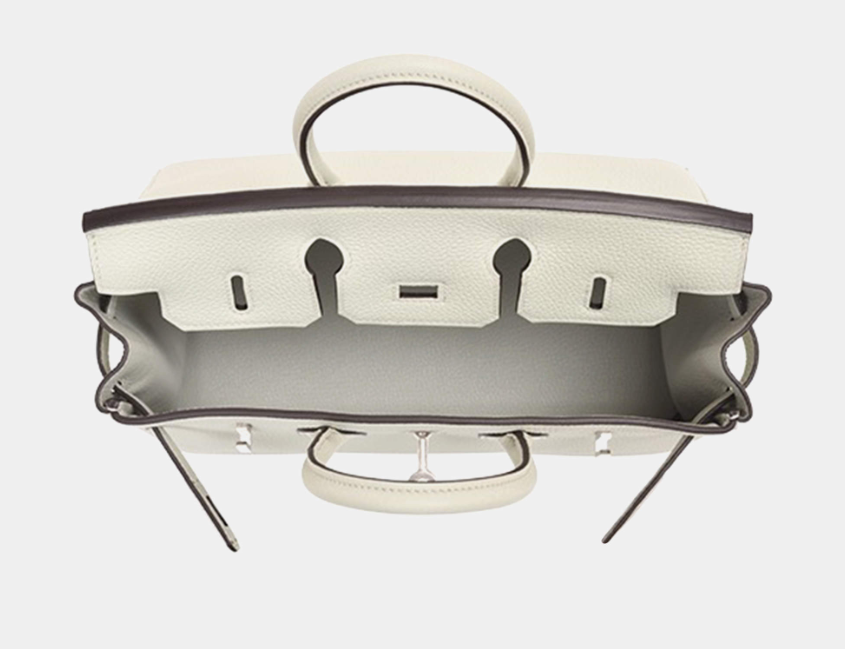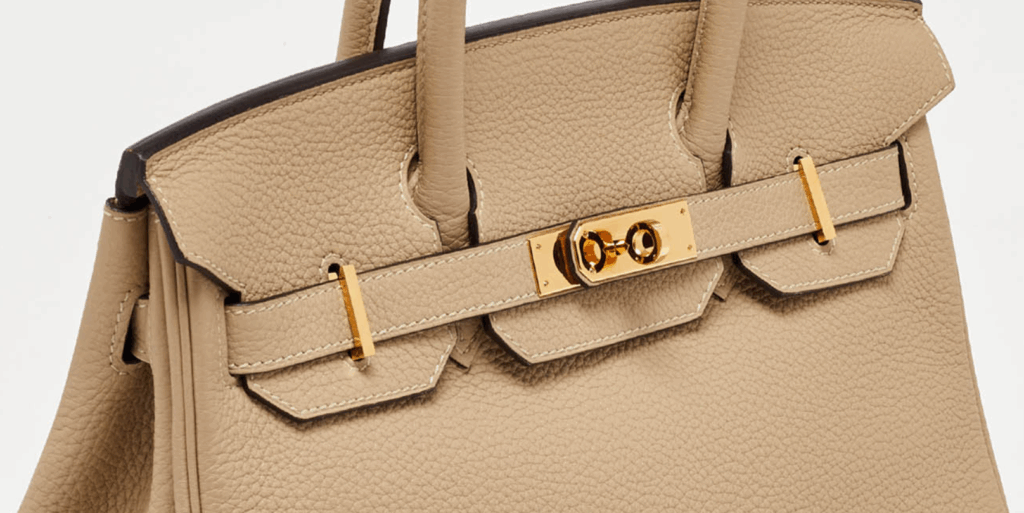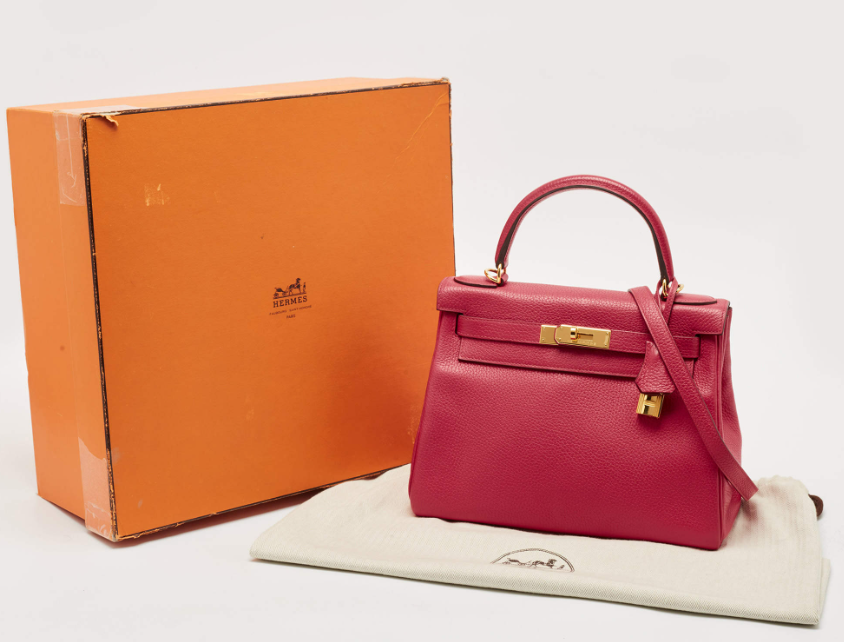Hermès, in Greek mythology, was the herald of the gods—the protector of travelers, merchants, and orators, as well as the original psychopomp, guiding souls between worlds.
Today, his namesake, Hermès, serves as the herald of handmade luxury bags and luggage. Interestingly, it does serve as a protector of rich travelers, and sophisticated ladies, ensuring their belongings are safely and securely transported to their destinations, that too, in the most stylish way.
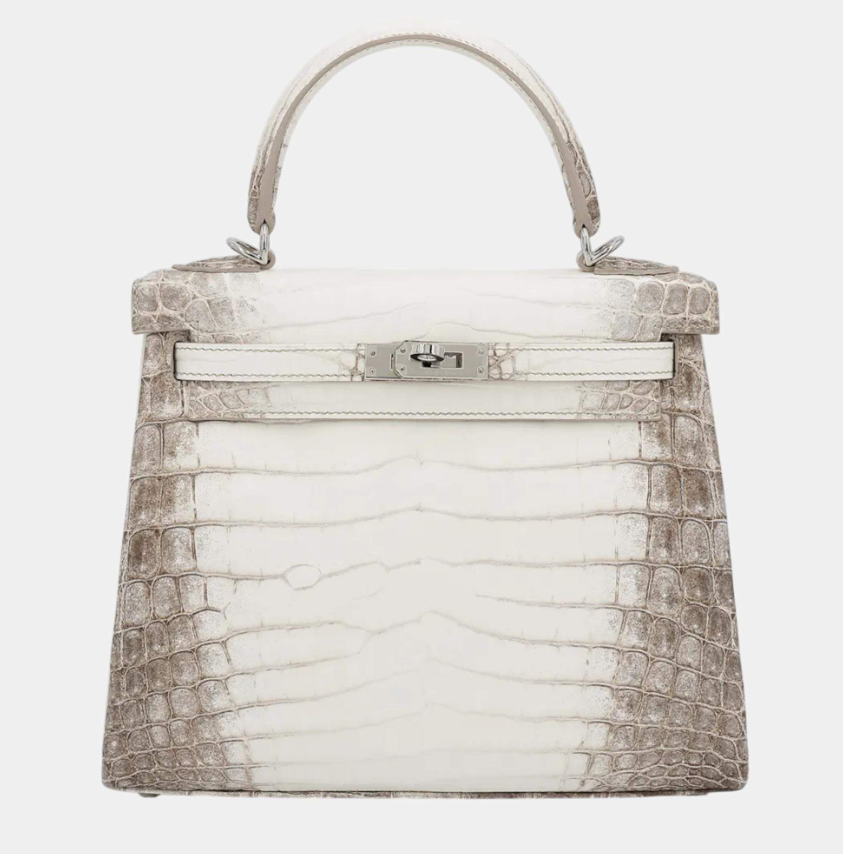 So, What Makes Hermès the God of Luxury Handbags?
So, What Makes Hermès the God of Luxury Handbags?
Hermès handbags are more than accessories—they’re masterpieces of craftsmanship, steeped in a legacy of excellence since 1837. From the buttery softness of Togo leather to the rarity of Niloticus Crocodile, Hermès materials define luxury. This guide decodes the brand’s iconic leathers, exotic skins, and unique textiles, offering insights into their textures, durability, and investment potential. Whether you’re a collector chasing a Himalaya Birkin or a first-time buyer eyeing a classic Kelly, here’s everything you need to know to navigate the world of Hermès.
Why Hermès Materials Are Revered 💕
The story starts in the 19th century when Hermès perfected saddlery for Europe’s elite. That same obsession with quality and practicality lives on in every Birkin, Kelly, and Constance.
Legend has it that Jane Birkin’s accidental spill of toiletries on a flight with Hermès CEO Jean-Louis Dumas inspired not only the Birkin bag itself but the brand’s pursuit of leathers durable enough for the modern woman—baby bottles, laptops, and all.
Today, each leather and exotic skin goes through rigorous selection, with only the top percentage making it into production. When you hold an Hermès bag, you are actually holding something designed to outlive trends—and possibly you.
Proof of this enduring allure?
On the 10th of July 2025, an “OG” Birkin, believed to be one of the earliest models ever made, was auctioned by Sotheby’s and sold in under 10 minutes for a jaw-dropping $10 million—the highest price ever paid for a handbag. Collectors called it “the holy grail of luxury,” and the frenzy proved what loyal aficionados have always known: Hermès isn’t just fashion; it’s a legend.
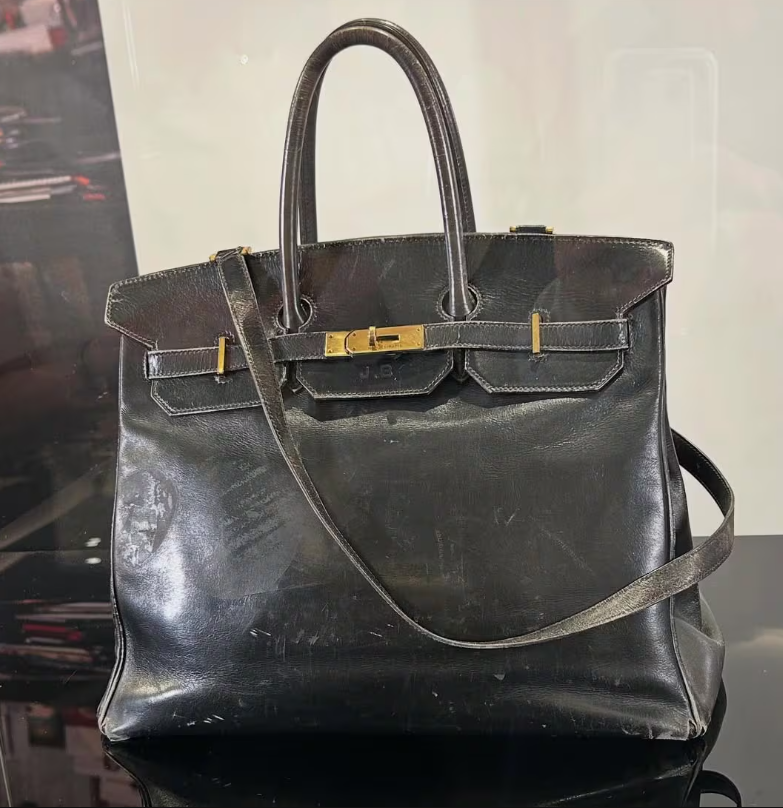 Some people said that the Japanese buyer of the record-breaking Birkin has over 80 pieces in their collection—**including more than 30 in rare or exotic leathers. Imagine a decades-old bag that, too, in fair condition (at best), is still worth millions!
Some people said that the Japanese buyer of the record-breaking Birkin has over 80 pieces in their collection—**including more than 30 in rare or exotic leathers. Imagine a decades-old bag that, too, in fair condition (at best), is still worth millions!
Hermès’ reputation as the pinnacle of luxury stems from its uncompromising commitment to craftsmanship. Each bag is handcrafted by a single artisan, often taking 18–24 hours to complete, using materials sourced from the finest global suppliers. From European calfskin to African ostrich, Hermès prioritizes ethical sourcing and meticulous tanning processes, ensuring every piece tells a story of heritage and artistry. This dedication makes Hermès bags not just fashion statements but heirlooms that appreciate over time—think of Victoria Beckham’s iconic matte Niloticus Crocodile Birkin or Rihanna’s custom Bleu Saphir Kelly.
Sourcing & Sustainability at Hermès
Hermès has long understood that true luxury depends on responsibility. The House partners exclusively with regulated farms and tanneries committed to the highest standards of animal welfare and environmental stewardship.
- All exotic skins, including Niloticus Crocodiles sourced from Hermès’ farm in Zimbabwe, comply with CITES (the Convention on International Trade in Endangered Species of Wild Fauna and Flora). This ensures traceability, legal sourcing, and protection of endangered species.
- Beyond compliance, Hermès also invests in eco-friendly tanning processes that reduce chemical waste and minimize water consumption. Vegetable tanning is used in certain leathers, like Barenia, to highlight the natural character of the hide.
- While debates persist around the ethics of exotic leathers, Hermès is notably transparent about its supply chain, publishing annual reports and working closely with environmental agencies. This dedication has set a new standard for sustainability and accountability in the luxury sector.
“Beyond their beauty and performance, Hermès leathers each have a story. From Togo’s accidental invention inspired by Jane Birkin’s carefree style to Box Calf’s heritage on the riding fields of 19th-century France, every hide carries a unique legacy.”
Hermès Leathers Tell You Their Story and What Makes Them Special
Togo
Story:
Rumor has it Togo was developed in 1997. One of the reasons was Jane Birkin using her namesake bag so casually—stuffing it with everything from baby bottles to toilet essentials—that Hermès felt the necessity for a leather durable enough to withstand modern life. Togo quickly became an icon, prized for its ability to look effortlessly chic no matter how much you put inside.
Clemence (Calfskin)
Story:
Clemence is named after the daughter of one of Hermès’ top tannery owners. It rose to popularity in the 1980s and 1990s when women started demanding more relaxed, slouchy bags that would soften over time—something less rigid than Box Calf. Clemence is perfect for the new, “casual luxury” aesthetic.
Box Calf (Calfskin)
Story:
Box Calf is one of the oldest Hermès leathers, dating back to the 1890s, originally used for Hermès’ signature riding saddles and rigid trunks. This is why it has such a smooth, polished finish and why older Hermès Kellys (especially from the Grace Kelly era) almost always appear in Box Calf—its glossy sheen was considered the height of elegance.
Fun Fact:
Vintage Box Calf Kellys have such a distinctive patina that serious collectors can often identify their age by the glow of the leather alone.
Chèvre (Goatskin)
Story:
Chèvre leathers were originally reserved for special orders and limited runs because goatskin was less commonly tanned at scale for handbags. In fact, many Constance bags in bright colors (like Rose Shocking) owe their vibrancy to Chèvre Mysore, which soaks up dye far more evenly than most calfskin. This exclusivity is why Chèvre still feels more “boutique” than Togo or Clemence.
Epsom (Embossed Calfskin)
Story:
Epsom leather was introduced as a more modern, easy-care option after collectors began demanding lighter, more travel-friendly bags that wouldn’t slouch or lose their shape on the go. Its machine-embossed grain is a direct response to customer complaints that Clemence and Togo were sometimes too soft for formal occasions.
Swift (Calfskin)
Story:
Swift replaced Gulliver leather (discontinued in 1999) because it was smoother, absorbed dye better, and was easier to restore. It was so beloved for bright colors that the introduction of Swift leather sparked the craze for Birkins in electric hues—like Rose Tyrien, Orange Poppy, and Bleu Electrique.
Collector Insight:
Many of the most famous celebrity Birkins in paparazzi shots are Swift, precisely because it photographs so well.
Hermès’ core leathers—Togo, Clemence, Epsom, and Swift—are beloved for their versatility and distinct characteristics.
| Name of the leather | When was it developed | Grain Characteristic | Texture | Weight | Scratch & Water Resistance | Care | Best Uses |
| Togo (Calf leather) | 1997 | Soft, pebbled grain with visible veins | Supple, matte, lightly textured | Medium-light | Highly scratch-resistant, moderately water-resistant | Minimal—wipe with soft cloth; occasional conditioning | Every day, Birkins and Kellys, a perfect balance of durability and elegance |
| Clemence (Calf leather) | 1980s (popularized later) | Larger, flatter pebble grain | Soft, matte, slouchy | Heavier than Togo | Scratch-resistant; less water-resistant due to looser grain | Store stuffed to maintain shape; condition occasionally | Larger bags (Birkin 40); casual, relaxed look |
| Epsom (Calf leather) | Early 2000s (modern embossed leather) | Fine, embossed crosshatch | Rigid, structured, semi-matte | Very lightweight | Extremely scratch- and water-resistant | Very low maintenance; easy to clean | Structured Kelly Sellier, Constance, formal bags |
| Swift (Calf leather) | 2006 (replaced Gulliver leather) | Very fine, smooth grain | Soft, glossy, buttery | Lightweight | Less scratch-resistant, prone to color transfer | Handle with care; avoid moisture; professional cleaning advised | Smaller bags (Mini Kelly), vibrant colors |
| Box Calf (Calf leather) | 1890s | Smooth, no visible grain | Glossy, firm, polished | Medium | Sensitive to scratches and water | Buff minor scratches; protect from rain; condition regularly | Vintage Kellys, classic collectors’ pieces |
| Chèvre (Goat Leather: Mysore & de Coromandel) | Longstanding Hermès staple | Pronounced spine-like grain | Slight sheen, smooth yet textured | Very lightweight | Highly scratch-resistant and durable | Minimal—wipe clean; retains shape | Small bags (Constance, Mini Kelly); special orders |
Popular Newcomers: Modern Hermès Leathers to Know
Hermès’ core leathers—Togo, Clemence, Epsom, Swift—remain the foundation of the brand’s luxury, but several newer materials are gaining traction in 2025:
Evercolor (Calfskin)
- Introduction: Released in 2012, but surging in popularity in recent seasons.
- Texture & Appearance: Smooth, pressed grain with exceptional color absorption.
- Durability: Lightweight yet durable, resistant to scratches.
- Best Uses: A modern favorite for Kellys and Constances in fresh hues like Jaune Poussin and Bleu Tie.
Sikkim (Bull Calfskin)
- Introduction: First appeared on the Jypsière and later used for the Lindy.
- Texture & Appearance: Ultra-soft and supple, with a smooth finish.
- Durability: Less structured than Togo or Clemence; requires mindful storage.
- Best Uses: Seasonal collections and soft, relaxed designs.
Milo Lambskin (Lamb Leather)
- Introduction: Used primarily in the Hermès In & Out Birkin (revealed 2021–2022).
- Texture & Appearance: Extremely smooth and luxurious—think Swift but even softer.
- Durability: Delicate, requires careful handling.
- Best Uses: Limited-edition and novelty Birkins prized by collectors.
Taurillon Novillo (Calfskin)
- Introduction: Introduced in recent years to fill the gap between Togo and Clemence.
- Texture & Appearance: Slightly lighter than Clemence, softer than Togo, with a semi-matte finish.
- Durability: Holds shape well while offering excellent color saturation.
- Best Uses: Versatile choice for structured and slouchy styles alike.
Chèvre Chamkila (Goatskin)
- Introduction: A refined variant of Chèvre Mysore, increasingly used in SS25.
- Texture & Appearance: Fine, iridescent grain with remarkable vibrancy.
- Durability: Lightweight and scratch-resistant.
- Best Uses: Smaller bags and special orders in standout shades like Rose Darling and Vert Mangrove.
Exotic Skins: Crocodile, Alligator, Ostrich, Lizard
Hermès’ exotic skins elevate their bags to the realm of rare art, commanding premium prices due to their scarcity and craftsmanship. Here’s a deep dive:
Crocodile (Niloticus & Porosus)
- Sourcing: Niloticus Crocodile, sourced from Zimbabwe’s Nile River, features larger, rectangular scales (marked with ••). Porosus Crocodile, from Australia, has smaller, symmetrical scales with distinct pores (marked with ^). Hermès farms these skins under strict regulations, but their use sparks debate among animal rights advocates due to the environmental impact of farming.
- Care Essentials: Avoid water, as it can dull the glossy Lisse finish or enlarge pores. Store in a temperature-controlled environment and use a soft cloth for cleaning. Professional conditioning is recommended annually.
- Investment Value: Crocodile bags, especially the Himalaya Niloticus Birkin, are the pinnacle of luxury, with auction prices reaching $400,000+. Their rarity ensures strong resale value.
- Collector’s Tip: The Himalaya Niloticus Crocodile is the pinnacle of rarity—think of it as the Birkin equivalent of a Stradivarius.
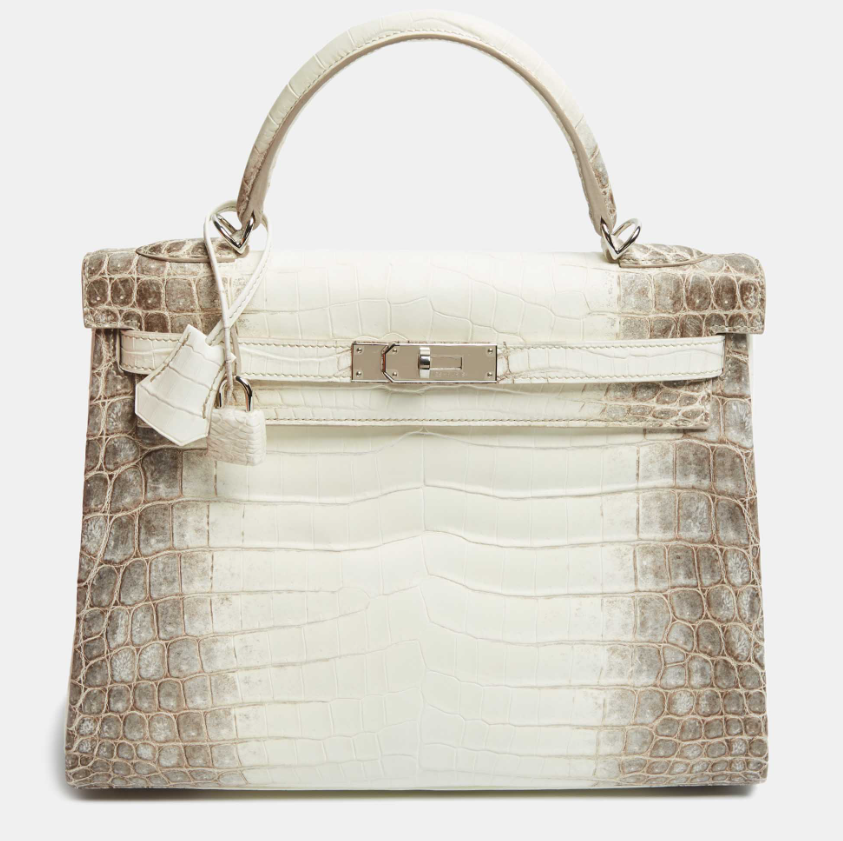 Alligator
Alligator
- Sourcing: Sourced from American alligators in Texas and Florida, marked with a square (□). Alligator has larger, irregular scales and a softer texture than crocodile. Ethical concerns persist, though Hermès adheres to CITES regulations.
- Care Essentials: Like crocodile, avoid moisture and sunlight. Avoid moisture and sunlight to preserve the matte or glossy finish. Regular professional treatments are essential.
- Investment Value: Alligator bags, particularly in neutral colors like black, command high resale prices, often exceeding retail value.
Ostrich
- Sourcing: Sourced from South African ostriches, known for their quill-like follicle pattern. No CITES certificate is required, unlike other exotics, making them easier to travel with.
- Care Essentials: Durable and scratch-resistant, but prone to darkening from hand oils. Store in a dust bag and avoid prolonged light exposure.
- Investment Value: Ostrich bags, like the Bougainvillea Ostrich Birkin, are less expensive than crocodile but highly collectible due to limited production and have strong resale performance..
Lizard
- Sourcing: Primarily Varanus Niloticus and Salvator from Africa and Southeast Asia, marked with = or ••. Rare due to small skin sizes, used for small bags like the Mini Kelly. Ethical sourcing is critical, with CITES compliance mandatory.
- Care Essentials: Delicate and prone to drying; avoid water and sunlight. Regular conditioning preserves the glossy finish.
- Investment Value: Lizard bags, like the Vert Vertigo Mini Kelly, fetch premium prices due to rarity and unique scale patterns.
Exotic skins require a CITES certificate for international travel (except ostrich), ensuring compliance with endangered species regulations.
Canvas & Other Materials
A sturdy cotton blend often used in casual styles like the Garden Party. Frequently paired with leather trims for added durability and visual contrast.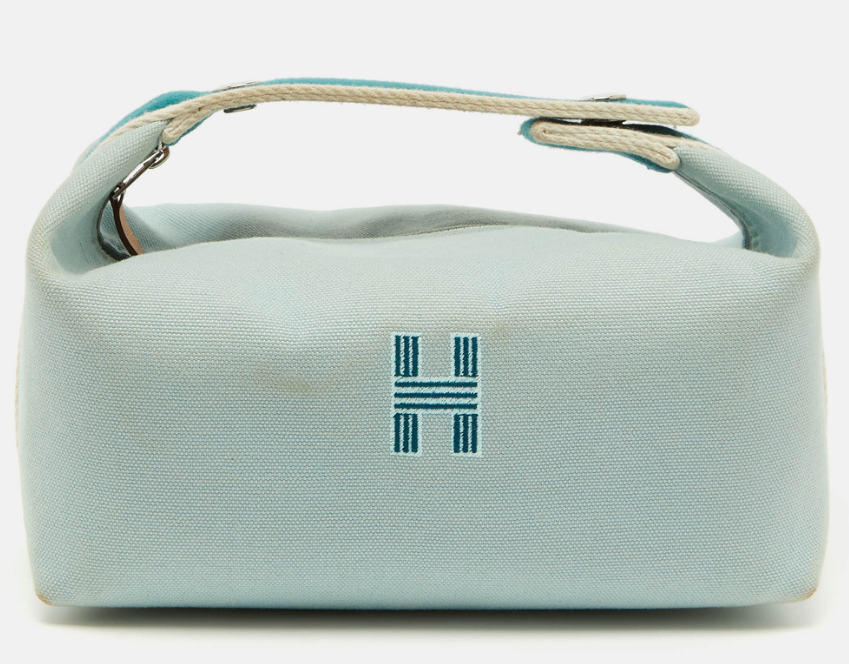
A smooth, natural calfskin with a subtle sheen and a rich patina over time. Typically reserved for limited-edition pieces and special orders.
- Velvet and Seasonal Novelties:
Materials like wool, silk blends, and velvet appear in seasonal collections. These bring texture and a unique flair to designs like the Lindy or Picotin.
These textiles offer lighter, more casual options for everyday wear while showcasing Hermès’ heritage craftsmanship beyond leather.
Hermès Colours: The Spectrum of Luxury
Hermès’ color palette is a masterful blend of heritage and innovation, transforming each bag into a work of art. Each season, the brand unveils hues that capture the moment while honoring its 1837 legacy, carefully selected to complement its iconic leathers and materials. From timeless neutrals to vibrant seasonal introductions, Hermès colors evoke emotion, inspire desire, and drive demand among collectors and fashion enthusiasts alike. The 2025 palette, with its bold new additions and refined classics, showcases Hermès’ unparalleled ability to redefine luxury through color.
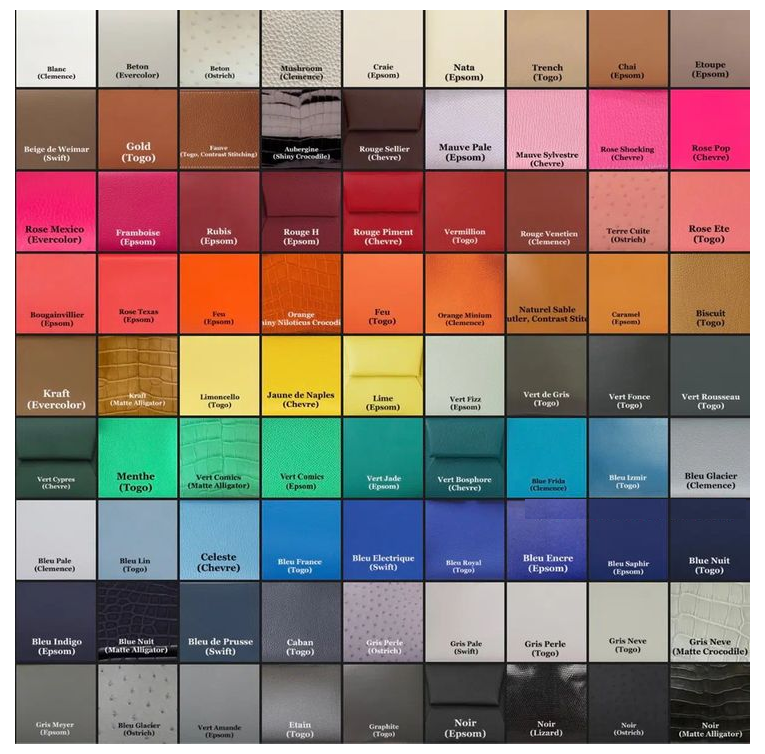 Timeless Classics
Timeless Classics
These enduring hues are the backbone of Hermès’ palette, offering versatility and timeless appeal:
- Noir: The ultimate black, effortlessly chic and universally flattering. It’s a staple for any bag, from Birkins to Kellys, and pairs seamlessly with any outfit or occasion.
- Gold: A warm, camel-toned neutral that exudes understated elegance. Its versatility makes it ideal for day-to-night transitions, especially on Togo or Epsom leathers.
- Etoupe: A sophisticated grey-taupe that adds refinement to any silhouette. Perfect for professional settings, it shines on structured bags like the Constance.
Fall/Winter 2024 Introductions
The FW24 collection introduced three new colors, blending festive metallics with soft pastels:
- Doré: A radiant metallic gold that feels both modern and timeless. Stunning on Chèvre Chamkila or Evercolor, it’s ideal for evening bags like the Mini Kelly, as seen in recent boutique displays (PurseBop, 2024).
- Gris Platine: A shimmering platinum grey that offers understated sophistication. Its cool undertones make it a perfect match for Epsom’s structured finish.
- Vert Peppermint: A pale, fresh green that feels contemporary and light. It pops on Swift leather, adding a playful yet elegant touch to smaller bags like the Kelly Pochette.
Spring/Summer 2025 Additions
For SS25, Hermès unveiled five vibrant hues that balance bold statements with refined neutrals, reflecting the season’s dynamic energy (PurseBlog, 2025):
- Rouge Radieux: A medium-toned, cool, bright red akin to Rouge Vif. Perfect for statement pieces, it shines on Swift leather, enhancing its glossy vibrancy for bags like the Constance.
- Vert Mangrove: A dark, slightly warm green reminiscent of Vert de Gris. Its lush, tropical vibe pairs beautifully with Togo or Clemence, adding depth to neutral outfits.
- Bleu Tie: A muted, summery blue similar to Bleu Agate. Vivid on Swift and structured on Epsom, it’s ideal for a Mini Kelly or Birkin, evoking clear summer skies.
- Gris Pantin: A light, blue-undertoned grey akin to Bleu Glacier. Versatile for everyday elegance, it complements Togo, Epsom, or Evercolor for a polished look.
- Gris Argenté: A soft, metallic silver, previously used in a limited 2004 Olympics run, now in regular production. It adds subtle luxury to special-edition bags, especially on Chèvre Chamkila.
Returning Favorites
Beloved hues like Bleu Hydra, Vert Véronèse, and Rouge Casaque continue to captivate collectors. These shades, often featured on iconic bags like the Birkin and Kelly, transcend trends with their timeless charm and are frequently paired with classic leathers like Togo or exotic skins for maximum impact.
Discontinued Icons
Rare shades like Rouge Garance and Bleu Jean are collector’s treasures, commanding premium prices on the resale market due to their scarcity. A Rouge Garance Birkin, for instance, can fetch 20–30% above retail on platforms like Sotheby’s or The RealReal, reflecting their enduring allure (Rarr.vintage, 2025).
Notable Mentions
The Casaque Étoilée Kelly, a limited-edition masterpiece, showcases Hermès’s color-blocking expertise with combinations like Rouge Sellier (Epsom)/Noir (Tadelakt)/Rose Darling (Chèvre) or Ardoise (Epsom)/Noir (Tadelakt)/Vert Peppermint (Chèvre). This bag, introduced for SS25, highlights the brand’s marquetry artistry and is a collector’s dream (PurseBlog, 2025).
Fun Fact: Rihanna’s custom Bleu Saphir Kelly remains one of the most coveted bespoke commissions, underscoring Hermès’ ability to create iconic, personalized color statements.
These hues shine brightest on leathers like Swift, Chèvre Mysore, Chèvre Chamkila, and Evercolor, which enhance their vibrancy and depth. Whether you’re drawn to the bold energy of Rouge Radieux or the subtle elegance of Gris Pantin, Hermès’ 2025 palette offers a hue for every style and occasion.
How to Choose: Matching Materials and Colours to Your Lifestyle & Goals
Selecting the perfect Hermès bag is an art that balances aesthetics, functionality, and investment potential. With a spectrum of materials and the vibrant 2025 color palette, your choice should reflect your lifestyle, personal style, and long-term goals. Here’s a comprehensive guide to help you navigate this luxurious decision.
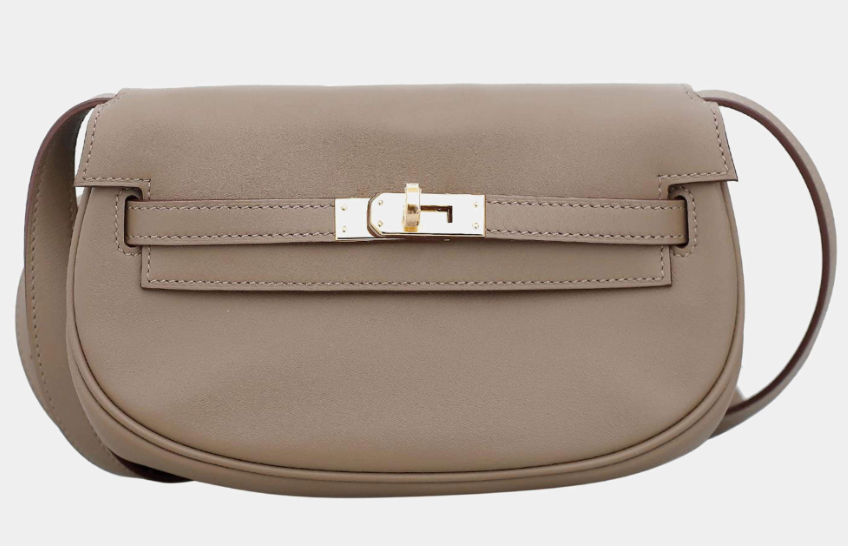 Wearability vs. Delicacy
Wearability vs. Delicacy
These durable leathers are ideal for daily use or travel, developing a rich patina over time. In versatile neutrals like Noir, Etoupe, or Gris Pantin, they give a timeless, practical look that withstands daily wear.
With its structured, embossed grain, Epsom is perfect for professional settings or bags that need to maintain shape. Colors like Bleu Tie or Gris Argenté add sophistication without overwhelming, ideal for a Kelly Sellier or Constance.
These delicate materials are best for special occasions. Swift showcases vibrant hues like Rouge Radieux, while exotics like Crocodile in Noir or Rose Darling offer unmatched luxury for events or collections.
Collector’s Pieces vs. Daily Drivers
- Exotic Skins (Crocodile, Ostrich, Lizard): High-maintenance but with exceptional resale value, exotics are collectors’ gems.
A Himalaya Crocodile Birkin or an Ostrich Kelly in Terre Cuite can appreciate significantly, especially in rare colors like Rouge Garance or Vert Mangrove.
- Togo, Epsom, or Evercolor:
These are practical for everyday use while retaining strong resale potential. Neutral colors like Gold or Gris Pantin ensure longevity in style and value, making them ideal for daily drivers.
| Leather/Material | Daily Use | Professional | Seasonal / Trend | Investment / Collecting | Special Occasion |
| Togo (Calfskin) | ✔️ Excellent | ✔️ Strong | ⚪ Neutral | ⚪ Moderate | ⚪ Moderate |
| Clemence (Calfskin) | ✔️ Excellent | ⚪ Moderate | ⚪ Neutral | ⚪ Moderate | ⚪ Moderate |
| Epsom (Calfskin) | ⚪ Moderate | ✔️ Excellent | ⚪ Neutral | ✔️ Strong | ⚪ Moderate |
| Swift (Calfskin) | ⚪ Moderate | ⚪ Moderate | ✔️ Excellent | ✔️ Strong | ✔️ Excellent |
| Evercolor (Calfskin) | ⚪ Moderate | ✔️ Excellent | ✔️ Excellent | ⚪ Moderate | ✔️ Excellent |
| Chèvre (Goatskin) | ⚪ Moderate | ✔️ Strong | ✔️ Excellent | ✔️ Excellent | ✔️ Excellent |
| Milo Lambskin | ❌ Not Recommended | ⚪ Moderate | ✔️ Excellent | ✔️ Strong | ✔️ Excellent |
| Exotic Skins | ❌ Not Recommended | ⚪ Moderate | ✔️ Excellent | ⭐ Ultimate | ✔️ Excellent |
Identification & Care Tips
Authenticating a Hermès bag is essential to safeguarding your investment, and examining materials, craftsmanship, and hardware is key. Counterfeits often falter in these details, so here’s what to look for to ensure your bag is genuine, along with care tips to preserve its value.
Hermès marks exotic skins with specific symbols to denote their origin: •• for Niloticus Crocodile, ^ for Porosus Crocodile, □ for Alligator, and = or •• for Lizard. Calfskin leathers like Togo, Epsom, or Chèvre Mysore feature consistent grain patterns and flawless, hand-stitched saddle stitching. Check for uniformity in texture and stitching—counterfeits often have irregular grains or machine-stitched seams.
Authentic Hermès bags showcase meticulous artistry. Look for hand-stitched saddle stitching with a slight slant, indicating an artisan’s work, and smooth, even dye application across the leather. Any inconsistencies, such as uneven stitching or patchy coloring, are red flags.
Hermès hardware—typically gold-plated or palladium-plated brass—is a hallmark of authenticity. Genuine hardware feels heavy, operates smoothly (e.g., Kelly turn-locks rotate effortlessly), and features crisp “HERMÈS-PARIS” engravings on clasps, zippers, or studs. Gold hardware (GHW) adds warmth, while palladium (PHW) offers a cool, modern finish. Limited-edition bags, like the SS25 Casaque Étoilée Kelly, may combine finishes for a unique look. Counterfeits often use lightweight, poorly engraved metal with a plasticky sheen.
Authentic Hermès bags come with a branded dust bag, an orange box with consistent logo placement, and a care booklet. Exotic skin bags include a CITES certificate for international travel compliance (except Ostrich). Missing or low-quality packaging is a warning sign.
Care Tips:
- Storage: Keep your bag in its dust bag in a cool, dry place, away from direct sunlight to prevent leather fading or hardware tarnishing.
- Cleaning: Use a soft, dry cloth to wipe leather and hardware. For calfskin leathers like Togo or Epsom, apply a Hermès-approved conditioner every 6–12 months. Exotic skins require annual professional cleaning to maintain their finish.
- Protection: Avoid water, oils, and perfumes, especially on delicate leathers like Swift or Box Calf and exotic skins. For hardware, polish gently with a microfiber cloth to preserve shine and avoid abrasive cleaners.
- Exotics: Ensure exotic skins are stored with proper humidity to prevent drying, particularly for lizard or crocodile. A CITES certificate is essential for travel with exotics (except ostrich).
Frequently Asked Questions: When in doubt, shout it out!
1. Which Hermès leather is the most durable for everyday use?
Answer:
Togo is widely considered the best all-rounder for daily wear. It’s highly scratch-resistant, holds its shape well, and has a supple feel without slouching excessively. Clemence is also durable but heavier and more prone to sagging over time. Epsom offers excellent structure and is lightweight, though it feels more rigid.
2. What is the rarest Hermès material?
Answer:
The rarest materials are exotic skins—especially Niloticus Crocodile Himalaya leather. Bags crafted from this skin, with their delicate gradient from white to smoky grey, are considered the ultimate collector’s prize. Himalaya Birkins regularly achieve auction prices upwards of $400,000.
3. How can I tell if my Hermès bag is authentic?
Answer:
Look for these signs:
- Craftsmanship: Meticulous saddle stitching, flawless edge painting, and consistent grain patterns.
- Stamps: A clear Hermès logo, a blind stamp indicating the artisan and year, and exotic skin symbols (e.g., •• for Niloticus).
- Hardware: Solid, weighty, engraved with Hermès markings.
- Packaging: Authentic bags include an orange box, dust bag, care booklet, and CITES certificate for exotics.
When in doubt, use a reputable authenticator or consult Hermès directly.
4. Do Hermès leathers change color over time?
Answer:
Yes, most natural leathers will develop a patina with use and exposure. Box Calf gains a rich sheen, Swift softens and shows subtle color shifts, and Ostrich darkens from contact with oils. Epsom is the most color-stable because of its embossed finish. Proper storage and cleaning help maintain vibrancy.
5. Which Hermès leather has the highest resale value?
Answer:
Exotics like Niloticus Crocodile and Porosus Crocodile consistently command the highest resale prices. Among calf leathers, Togo in neutral colors (Noir, Etoupe, Gold) tends to retain 80–120% of retail value. Limited-edition colors and rare combinations can double in price over time.
From Togo to Himalaya, Your Dream Hermès is Just a Click Away.
Discover rare leathers, iconic colors, and investment-worthy pieces—authenticated and waiting for you at The Luxury Closet. Shop pre-owned Hermès Birkins and Kellys with full authentication and expert guidance, and you will feel you own the world.
Browse the Hermès Collection right now to find your coveted piece before anyone else does!


